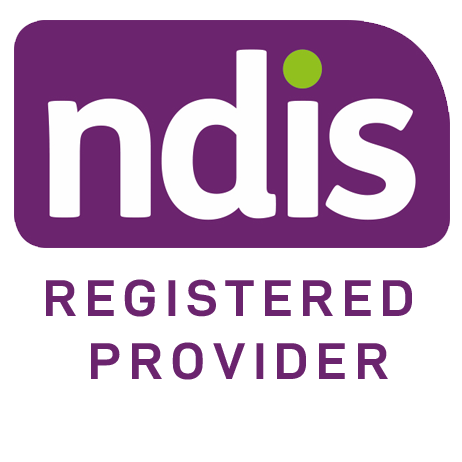Navigating the NDIS Price Guide can sometimes feel overwhelming for participants and families. With each financial year, the National Disability Insurance Agency (NDIA) updates its NDIS Pricing Arrangements and Price Limits to ensure fair, transparent, and sustainable support for Australians living with disability.
The new NDIS Price Guide 2025–26, effective from 1 July 2025, introduces revised pricing structures, clearer claiming rules, and ongoing improvements to support coordination, therapy, daily living, and home care services.
At Premier Home Care Sydney, our goal is to help you understand these updates so you can make informed decisions about your supports and funding. In this blog, we’ll break down what’s new, what the NDIS Pricing Arrangements mean for you, and how you can get the most value from your plan.
What Is the NDIS Price Guide?
The NDIS Price Guide, now officially referred to as the NDIS Pricing Arrangements and Price Limits, is a comprehensive document released by the NDIA. It outlines:
-
The maximum prices (price limits) that registered providers can charge for NDIS-funded supports.
-
Claiming rules, including non-face-to-face time, travel, and cancellations.
-
Definitions of support categories, units of measure, and funding types.
-
A full list of supports found in the NDIS Support Catalogue.
These arrangements help ensure that participants receive quality, value-for-money services while maintaining fairness across the disability sector.
For full official details, you can view the NDIS Pricing Arrangements and Price Limits 2025–26 on the NDIS website.
Why Price Regulation Matters
The NDIA’s price regulation ensures that NDIS participants get fair access to essential supports — from daily living assistance to specialised therapies. It prevents overcharging, protects participants, and ensures the sustainability of the scheme for future generations.
Price controls also help providers like Premier Home Care maintain consistent quality and transparency in service delivery.
Key Updates in the NDIS Pricing Arrangements 2025–26
Every year, the NDIA conducts an Annual Pricing Review to determine any required adjustments to support costs and funding arrangements. The 2025–26 updates are based on detailed market data, including more than 10 million therapy transactions nationwide.
Here are some of the major highlights from this year’s NDIS Pricing Arrangements:
Updated Price Limits for Core Supports
-
Adjusted maximum hourly rates for Assistance with Daily Life and Social & Community Participation.
-
Inclusion of regional pricing variations, allowing higher rates in remote and very remote areas.
-
Continued focus on supporting participant independence and flexibility in service use.
Clarity on Claiming Rules
The 2025–26 guide strengthens clarity around when and how providers can claim for supports, including:
-
Non-face-to-face time (such as report writing or coordination tasks).
-
Provider travel (with limits set to 30 minutes in metro areas and 60 minutes in remote zones).
-
Short-notice cancellations, ensuring fair compensation for booked service time.
Enhanced Transparency Through the Support Catalogue
The NDIS Support Catalogue 2025–26 lists every claimable support item, its price limit, unit of measure, and whether additional costs like travel or telehealth can apply.
This helps participants understand exactly what they’re paying for and empowers them to compare service rates confidently.
Strengthened Oversight for Quality and Safety
The NDIA continues to work alongside the NDIS Quality and Safeguards Commission to ensure all services comply with best-practice care, safety standards, and participant rights.
This reinforces accountability for providers and gives participants greater peace of mind that their funding is used ethically and effectively.
Comparison: 2024–25 vs 2025–26 NDIS Price Guide
| Category | 2024–25 | 2025–26 | What It Means for Participants |
|---|---|---|---|
| Core Supports | Standard price limits for personal and community support. | Adjusted rates for inflation and workforce costs. | Slightly higher hourly rates help maintain service quality and staffing. |
| Provider Travel | 20–30 minutes of travel time could be claimed in metro areas. | Up to 30 mins in metro and up to 60 mins in remote / very remote areas. | More flexibility for providers to reach clients in regional and remote locations. |
| Therapy Services | Limited allowance for non-face-to-face work (reports, planning). | Clearer rules for telehealth, coordination, and non-face-to-face support. | Easier to claim legitimate therapy time that supports outcomes, not just in-person hours. |
| SIL (Supported Independent Living) | Hourly rates capped under 2024 pricing structure. | Updated pricing aligned with new worker cost models. | Better balance between participant support needs and provider staffing costs. |
| Assistive Technology (AT) | High-cost items often required manual quoting and longer approval. | Streamlined quote process and updated unit pricing guidance. | Faster access to equipment and more clarity on what can be claimed. |
| Short-Term vs Medium-Term Accommodation | Less separation in how short-term accommodation and ongoing support were described. | Clear definition of Short-Term Accommodation, Medium-Term Accommodation, and Respite. | Easier for families to understand respite care, recovery stays, and transition care options. |
How the NDIS Pricing Arrangements Affect Participants
Understanding the NDIS Price Guide is crucial because it directly influences your plan’s flexibility and value. Here’s how it impacts participants:
1. More Transparency
With every support item listed in the NDIS Support Catalogue, participants can compare service prices before agreeing to them — ensuring informed decision-making.
2. Fair Pricing
Providers must comply with NDIA’s price limits, meaning you can’t be charged more than the approved maximum. This ensures your funding stretches further.
3. Flexibility in Service Choices
Within your Core Supports budget, you can choose how to spend your funding — whether it’s on personal care, meal preparation, or community participation.
4. Simplified Claims
The updated claiming rules make it easier for providers to bill accurately and for participants to track their funding through the NDIS portal.
5. Better Service Value
Since providers are expected to align with award rates and quality standards, participants receive services that reflect fair cost and professional standards.
What Are NDIS Price Limits?
Price limits are the maximum hourly or unit prices a registered NDIS provider can charge for a given support service.
These limits depend on:
-
The type of support (Core, Capacity Building, or Capital).
-
The time of day or week (weekday, weekend, or public holiday).
-
The participant’s location (metro, remote, or very remote).
Providers and participants can negotiate lower prices, but not higher than the published limits in the NDIS Pricing Arrangements.
You can always verify the current price limits directly from the NDIS Pricing Arrangements and Price Limits page.
The Role of the NDIS Support Catalogue
The NDIS Support Catalogue works hand-in-hand with the Price Guide. It lists:
-
All available supports and their item numbers.
-
Price caps for each item.
-
Claiming conditions (travel, telehealth, group support, etc.).
-
Whether the item applies to Core, Capital, or Capacity Building budgets.
By reviewing the catalogue, participants and providers can ensure accurate claims and appropriate budgeting for services like:
-
Daily Personal Activities
-
Respite Care and Short-Term Accommodation
-
Therapy and Health Supports
-
Assistive Technology and Home Modifications
What This Means for Premier Home Care Clients
At Premier Home Care, we’re committed to helping you get the most from your NDIS plan. Understanding the NDIS Price Guide ensures you know how every dollar is spent and what supports are covered.
Here’s how our services align with the current NDIS Pricing Arrangements:
-
Home Care Services — Assistance with daily living and household management at fair, NDIA-compliant rates.
-
Aged and Disability Care — Compassionate care tailored to your needs and budget.
-
Respite Care — Short-term support options designed to relieve families and caregivers.
-
Transition Care — Smooth recovery and adjustment programs aligned with NDIS guidelines.
-
NDIS Provider Services — Fully registered and transparent support delivery under the latest pricing framework.
Our experienced team stays up to date with every NDIA update, so you never have to worry about compliance or hidden costs.
-
How the Annual Pricing Review Works
Each year, the NDIA conducts an Annual Pricing Review (APR) that involves:
-
Consultation with providers and participants.
-
Economic analysis of disability support markets.
-
Review of industry wages, travel costs, and inflation.
The goal is to keep the scheme sustainable while ensuring participants continue to receive value for money and quality services.
How to Access the Latest NDIS Price Guide
You can find the most recent NDIS Price Guide 2025–26 and NDIS Support Catalogue in multiple formats directly on the NDIS Pricing Arrangements and Price Limits page.
These documents are updated periodically throughout the year, so it’s always best to check for the latest version or contact your Premier Home Care support coordinator for assistance.
Final Thoughts
The NDIS Pricing Arrangements and Price Limits 2025–26 bring positive updates that continue to focus on transparency, affordability, and participant choice.
Understanding how these pricing structures work empowers participants to make the most of their plans — ensuring every service you receive aligns with your goals, needs, and budget.
At Premier Home Care, we’re more than just an NDIS provider — we’re your partners in achieving independence, comfort, and confidence.
To learn more or speak with our NDIS specialists, visit Premier Home Care Sydney or call us today to discuss how we can help you navigate the NDIS Price Guide 2025–26 with ease.



